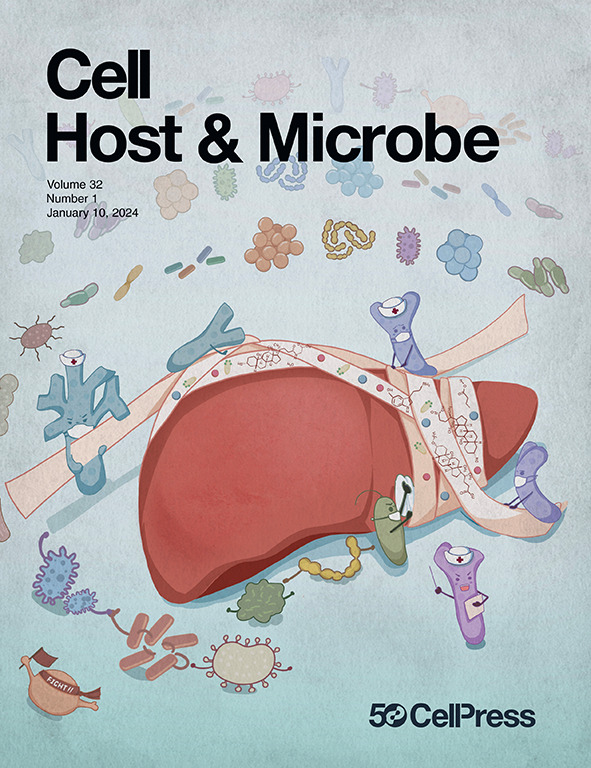Immunoglobulin A controls intestinal virus colonization to preserve immune homeostasis
IF 20.6
1区 医学
Q1 MICROBIOLOGY
引用次数: 0
Abstract
Immunoglobulin A (IgA) is the predominant immunoglobulin isotype in mammals, primarily secreted at type I mucosal surfaces. Despite its abundance, the precise role of secretory IgA in the intestinal lumen, where it coats a diverse array of commensal microbiota, has remained elusive. Our study reveals that germinal center IgA responses are essential for preventing chronic colonization of the gut by specific viruses. In the absence of IgA, chronic viral colonization triggers an antigen-driven expansion of CD8αβ+ intraepithelial lymphocytes (IELs). Although these IELs are unable to clear the virus, they contribute to maintaining homeostasis by regulating its load and type I interferon responses. Consequently, IgA deficiency increases susceptibility to colitis in genetically susceptible hosts or following chemical induction but only in the presence of viral pathobionts requiring IgA for their clearance. These findings underscore the potential vulnerability of IgA-deficient individuals to immunopathology when exposed to selective viral pathobionts.

求助全文
约1分钟内获得全文
求助全文
来源期刊

Cell host & microbe
生物-微生物学
CiteScore
45.10
自引率
1.70%
发文量
201
审稿时长
4-8 weeks
期刊介绍:
Cell Host & Microbe is a scientific journal that was launched in March 2007. The journal aims to provide a platform for scientists to exchange ideas and concepts related to the study of microbes and their interaction with host organisms at a molecular, cellular, and immune level. It publishes novel findings on a wide range of microorganisms including bacteria, fungi, parasites, and viruses. The journal focuses on the interface between the microbe and its host, whether the host is a vertebrate, invertebrate, or plant, and whether the microbe is pathogenic, non-pathogenic, or commensal. The integrated study of microbes and their interactions with each other, their host, and the cellular environment they inhabit is a unifying theme of the journal. The published work in Cell Host & Microbe is expected to be of exceptional significance within its field and also of interest to researchers in other areas. In addition to primary research articles, the journal features expert analysis, commentary, and reviews on current topics of interest in the field.
 求助内容:
求助内容: 应助结果提醒方式:
应助结果提醒方式:


